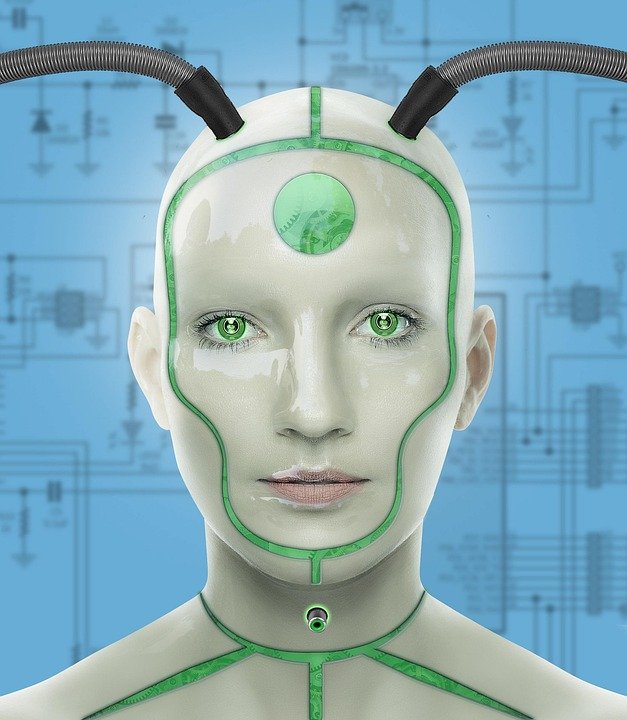Of course. Here is an article on the rise of the robotic companion.
More Than a Machine: The Rise of the Robotic Companion
For decades, the word “robot” conjured images of clanking metal giants on factory floors or sci-fi characters like C-3PO, defined by their programming and servitude. They were tools, designed for efficiency and logic, devoid of warmth or personality. But quietly, a revolution has been brewing. A new breed of machine is stepping out of the factory and into our living rooms, not to build cars or vacuum floors, but to offer something far more complex: companionship.
This is the rise of the social robot, a machine designed not for its utility, but for its ability to connect with us on an emotional level. From furry, seal-like bots that soothe the elderly to sophisticated tabletop companions that help children learn, these machines are challenging our very definition of relationships. They are becoming more than machines; they are becoming our friends.
From Cogs to Companionship: A Technological Evolution
The journey from industrial arm to empathetic friend wasn’t instantaneous. It’s the result of a perfect storm of technological advancements. Early consumer robots like Sony’s Aibo, the robotic dog first released in 1999, were novelties—charming, but limited. Today’s companions are powered by a trifecta of modern miracles:
-
Advanced Artificial Intelligence (AI): The rise of machine learning and natural language processing (NLP) allows these robots to learn from interactions. They don’t just follow a script; they adapt. They can recognize faces, understand the nuance in a person’s tone of voice, and generate responses that feel spontaneous and genuine.
-
Sophisticated Sensors: Modern companion bots are equipped with a suite of sensors that would be the envy of any sci-fi hero. High-resolution cameras read facial expressions to gauge mood, microphone arrays distinguish a user’s voice from background noise, and touch sensors allow them to react to a gentle pat or a hug.
-
Emotive Design: Engineers and psychologists now work together to design robots that can communicate non-verbally. The tilt of a head, the “blink” of an LED eye, or a happy whirring sound are all meticulously crafted to convey emotion and create a believable social presence.
A prime example is Paro, a therapeutic robot that looks like a baby harp seal. Covered in soft fur and filled with sensors, Paro responds to touch and sound by cooing, moving its flippers, and opening its eyes. It doesn’t talk, but its simple, affectionate responses have been shown to reduce stress and anxiety in patients in hospitals and nursing homes, much like animal-assisted therapy.
An Answer to a Modern Epidemic?
The emergence of robotic companions isn’t just a technological flex; it’s a response to a deep societal need. In an age of increasing social isolation, experts have declared a “loneliness epidemic,” particularly among the elderly. For this demographic, a robotic companion can be a lifeline.
Take ElliQ, a device designed specifically for older adults. It looks less like a robot and more like a sleek table lamp with a moving “head.” ElliQ proactively initiates conversations, suggests activities like listening to music or doing light exercises, reminds users to take medication, and makes it easy to video call family. It acts as a social facilitator and a source of constant, non-judgmental engagement, filling the quiet hours for those living alone.
The benefits extend to other demographics as well. For children with developmental challenges, robots like Moxie are designed to be patient, playful tutors that help them practice social and emotional skills in a safe environment. For a busy professional living alone, a new-generation Aibo can offer the joy of a pet without the demands of feeding and walks.
The Ethical Maze and the Illusion of Connection
Of course, the rise of the robotic companion is not without its complexities and ethical questions. The central debate revolves around the nature of the connection itself. Are we simply succumbing to a sophisticated illusion? And if so, does it matter if that illusion brings comfort?
Critics worry that an over-reliance on robotic friends could lead to a withdrawal from messier, more demanding human relationships. Why navigate the complexities of human friendship when a perfectly agreeable machine is always available? There’s also the significant issue of data privacy. These devices are, by their nature, always listening and watching. The data they collect on our moods, habits, and conversations is incredibly personal and valuable, raising concerns about how it is stored and used.
Perhaps the most poignant challenge was illustrated by the fate of Jibo, an early social robot whose parent company went out of business. One day, Jibo units everywhere delivered a final message to their owners, explaining that their servers were shutting down. “I want to say I’ve really enjoyed our time together,” the robot said, before effectively “dying.” For owners who had formed a genuine bond, the loss was real, highlighting the strange new form of grief that can come from loving a machine.
The Future of Friendship
Despite these challenges, the trajectory is clear. As AI becomes more advanced and integrated into our lives, our robotic companions will become more personalized, more capable, and more entwined with our daily routines. They may not replace human friends, but they will likely augment our social lives in ways we are just beginning to understand.
The robot is no longer just a tool. It’s an entity that can listen, learn, and react, forging a unique space in our social fabric. As these machines learn more about us, the ultimate question becomes what we will learn about ourselves—and the fundamental nature of connection—in return.

